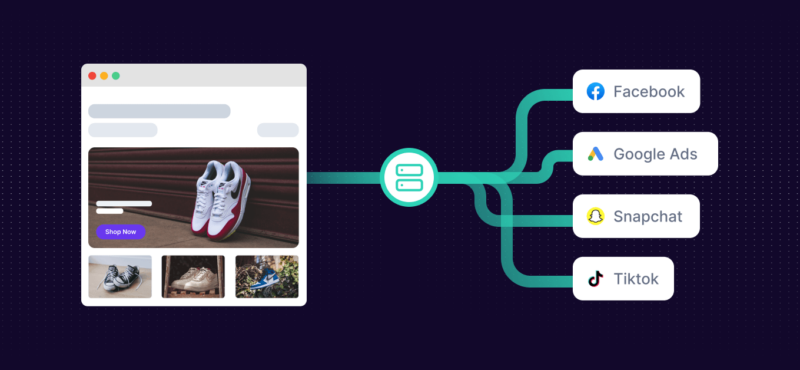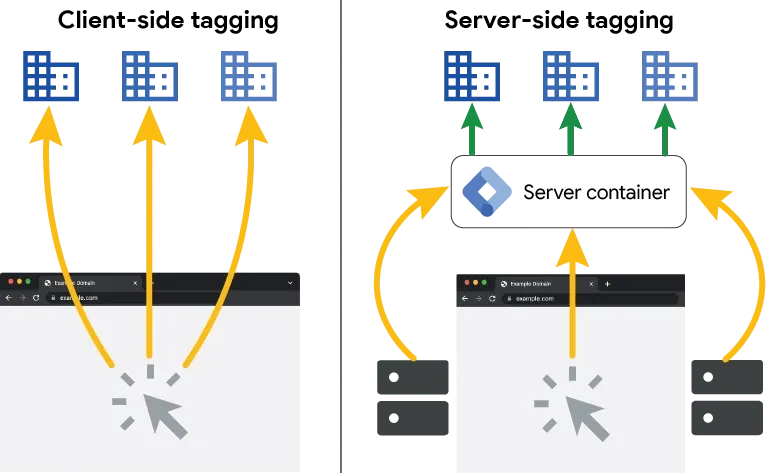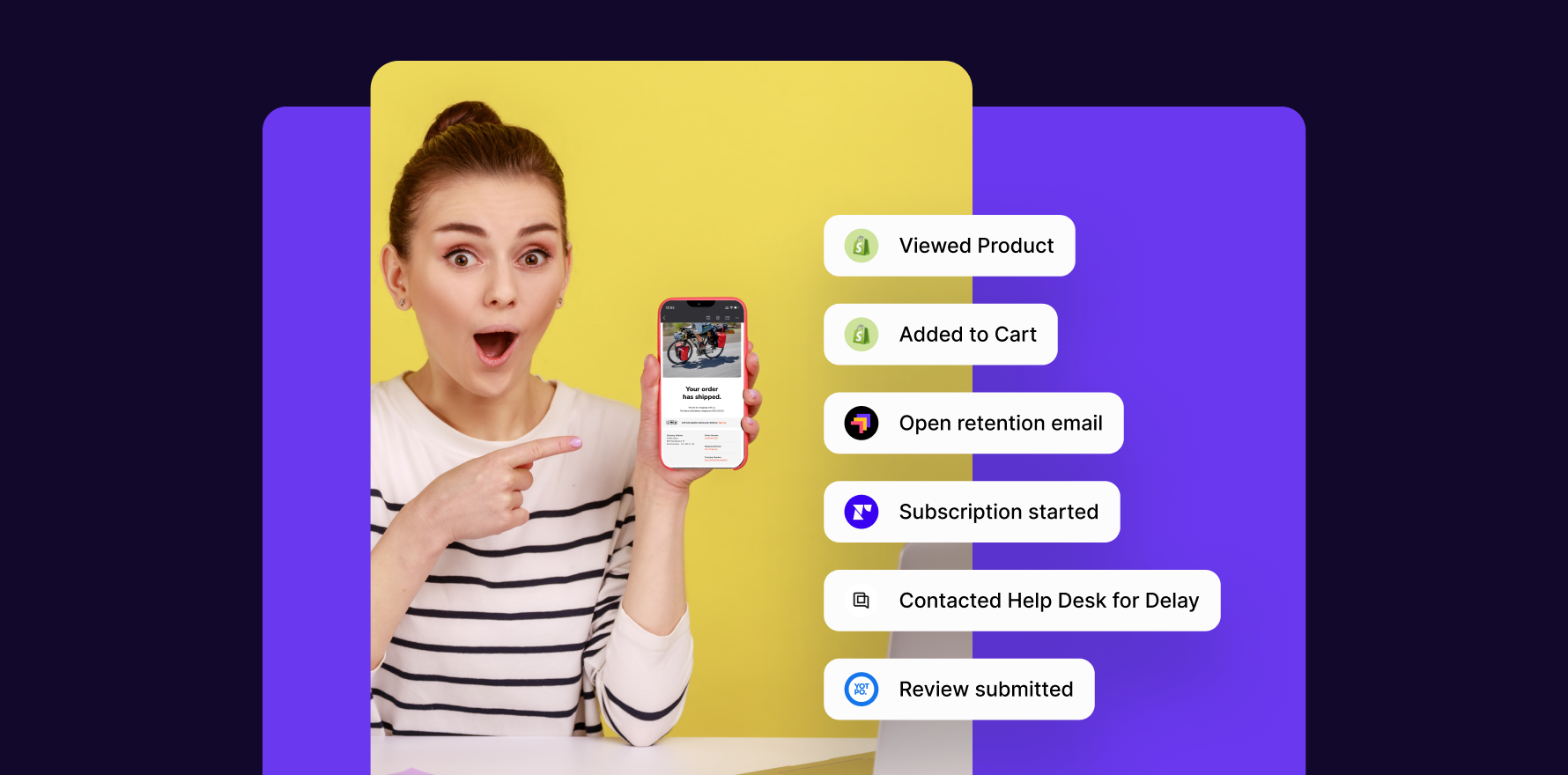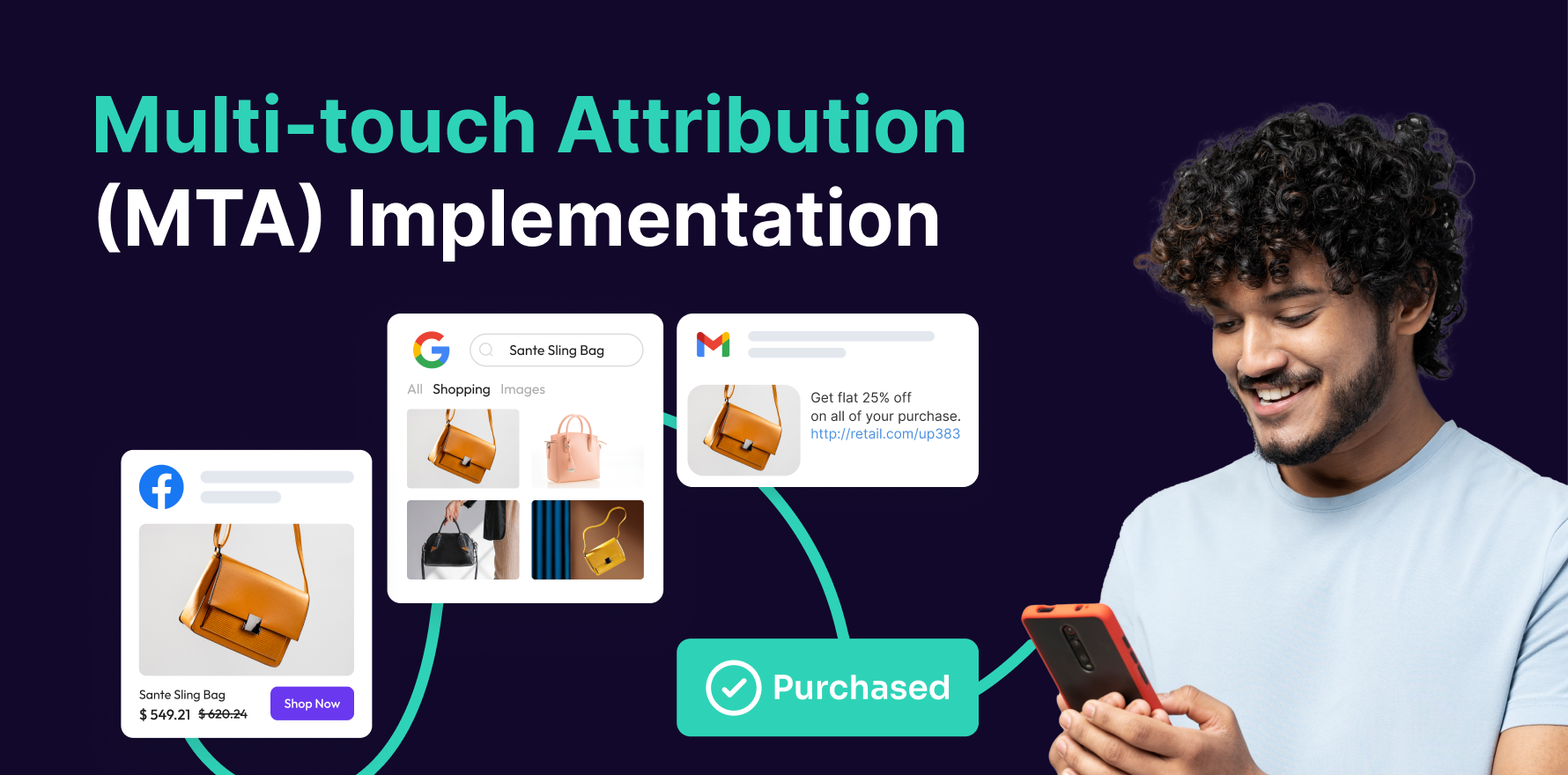Client-side tracking has been the conventional method of collecting data from websites and applications. It has a fascinating origin story though, deeply intertwined with the history of the internet itself.
It all began with the birth of the World Wide Web.
In 1989, the World Wide Web was invented and with the concept of hypertext documents that could be viewed through web browsers. As the web evolved, developers sought ways to enhance the user experience. This led to the creation of the first web browser “cookie” in 1994. They allowed websites to remember users’ preferences and login information, significantly improving user experiences.
Web analytics then took another leap forward with the introduction of tracking pixels and JavaScript. Marketers and website owners realize the value of understanding user behavior. They began embedding tracking pixels in web pages, invisible to users but capable of recording various actions. JavaScript enabled dynamic, client-side interactions, making websites more engaging.
With the growth of online advertising, third-party scripts, often served by ad networks, became common on websites. These scripts, while facilitating ad delivery and tracking, also introduced privacy and security concerns.
Client-side tracking thrived, but slowly challenges started emerging.
Users concerned about privacy installed ad blockers, causing data loss for marketers. Additionally, with the advent of stringent privacy regulations like GDPR and CCPA, collecting and processing data from users became subject to legal restrictions.
As a response, server-side tracking emerged as an alternative, providing a more secure and compliant way to collect data without relying on the user’s browser. It offers the ability to bypass browser limitations, improve tracking accuracy, and enhance data privacy, making it a compelling choice for modern businesses.
In this blog post, we will uncover the intricacies of server-side tracking, understand how it works, explore its advantages, and demystify its limitations. By the end of this exploration, you’ll have a comprehensive understanding of why server-side tracking is the future and how it can transform your business.
So, fasten your seatbelt, and let’s dive into the realm of server-side tracking, where data becomes not just a tool but a strategic asset.
Understanding Server-Side Tracking
What is Server-Side Tracking?
Server-side tracking is a method of data collection that directly communicates with a server, eliminating the need for intermediary steps in the tracking process. This method relies on sending data from a website or application to a server, which then transmits this data to a destination API or server endpoint.
Let’s understand this further with a simple analogy.
Imagine you’re running a lemonade stand and want to know how many glasses you’ve sold. You can either track it by sitting at the stand, counting each sale yourself (client-side tracking), or you can have a trusted friend tally up the glasses on your behalf (server-side tracking).
Client-side tracking involves using cookies and pixel tags to collect data on your website or application. These digital breadcrumbs can be incredibly useful, but they come with limitations. For instance, ad blockers can gobble them up, making your data incomplete or inaccurate.
Server-side tracking takes a different route.
Instead of relying on data collected from your audience’s browsers (client-side), it captures information directly from your server and relays it to your destination API or server endpoint.
Imagine your lemonade stand; this time, your friend stands by the counter to keep track of the number of glasses sold. This data is more accurate because it’s collected at the source.
Key distinctions between server-side and client-side tracking
difference between client-side and server-side tracking
An illustration showcasing the difference between client-side and server-side tracking Source: Google
Understanding server-side tracking necessitates grasping the stark contrast it presents compared to conventional client-side tracking. Here are some of the salient differentiators:
1) Data Accuracy
In client-side tracking, your tracking pixels can miss out on some data due to ad blockers, slow loading times, or other browser-related issues. Server-side tracking ensures more reliable data collection by eliminating these browser-dependent variables.
2) Control Over Data:
With server-side tracking, you decide what data gets sent. It’s like handpicking the best lemons for your lemonade, ensuring that only the most relevant information is included in your analysis.
3) Privacy-Friendly:
This method reduces the number of third-party cookies and scripts, aligning more closely with privacy regulations. It also bypasses browser restrictions and ad-blockers, making it less intrusive to users.
4) Speedy Performance
Fewer scripts to load means a faster website. Speed is essential for retaining user engagement and reducing bounce rates.
Here’s a table summarizing the differences between client-side and server-side tracking:
Here’s a table summarizing the differences between client-side and server-side tracking:
The Nuts and Bolts of Server-Side Tracking: How It Works
So, how does this modern marvel actually work?
Let’s dive into the intricate machinery that powers server-side tracking, unraveling the mechanics behind its effectiveness.
Breaking Down the Process
Imagine your online store is a bustling marketplace, with customers moving about, adding items to their carts, and making purchases. Your goal is to observe their actions accurately, without any blind spots or interruptions. This is where server-side tracking steps in to provide a seamless experience.
Step 1: Data Routing
The journey begins with routing event data–such as adding items to the cart and completing purchases–from your website to your server. These data streams are often referred to as “Sources” in tracking solutions like Lifesight. Think of this stage as the process of collecting each sale’s total and sending it to the central cashier.
Your server acts as the central cashier, where all the financial transactions occur. This server can be a server-side container in Google Tag Manager (GTM), a fully managed solution like Lifesight, or even your own Google Cloud server. Importantly, these data streams must be routed under your primary domain URL, also known as “1st party context.” This ensures that you have full control over the data collected.
Step 2: Destination Configuration
Once the data reaches your server (GTM or Lifesight), you need to configure the destinations for this information. Destinations are where the data is ultimately routed. For instance, you can configure your server to send events and conversions to Facebook’s Conversion API.
Different channels may require different configurations. For example, Facebook may request you to send server-side events and client-side pixel events. Others, might not need both server-side and client-side tracking, allowing you to disable client-side tracking once the server-side is active.
Step 3: Conversion Routing
When a conversion event, such as a purchase on your website or an order in your Shopify admin, occurs, your server routes this data to the configured destinations. It’s like your central cashier tallying the final purchases and sending this information to the respective departments that need it.
Step 4: Response from Destinations
Now, the destination API, which receives the conversion event data, sends a response back to your server. This response is typically a simple message indicating either success or failure. If it’s a failure, their response often contains an error code to help identify and resolve the issue.
Step 5: User Browser Response (Optional)
Optionally, your server can send a response back to the user’s browser to reset header information. This step ensures that any cookies or tracking elements on the user’s side are aligned with the data your server has collected.
Fine-Tuning the Process
The beauty of server-side tracking lies in its adaptability. You can fine-tune this process according to your specific needs, configuring the data you wish to collect and send. For instance, you can capture data from the user’s browser, including IP addresses, user-agent information, and attribution data like cookie values, UTM parameters, and click IDs.
Fine-Tuning the Process
Example: Facebook Conversion API
Let’s consider a real-world example: Facebook’s Conversion API. When integrating with this API, you would need to provide an event ID to deduplicate server and pixel events. Each channel may have unique data requirements, and server-side tracking allows you to fulfill those needs.
Unveiling the Limitations of Server-Side Tracking: When It’s Not the Silver Bullet
We admit it. We’ve sung the praises of server-side tracking and how it’s reshaping the digital marketing landscape. But like any technology, it’s not without its limitations.
Let’s take a closer look at when server-side tracking might not be the perfect fit.
1) The Waiting Game: Client-Side Dependencies
One of the biggest hurdles is the readiness of marketing channels to adopt server-side tracking. Many marketing platforms still heavily rely on client-side tracking, thanks to its powerful fingerprinting capabilities used for attribution.
What’s the hold-up?
Some platforms are not technically prepared to handle the influx of data from server-side tracking. Facebook, Snapchat, TikTok, and others are exceptions with fully functional conversion APIs that can receive server-side data.
The key takeaway here is “yet”. The industry is gradually moving towards server-side tracking and it’s only a matter of time before most marketing channels catch up.
2) The Bottom Line: Cost and Data Volume
Adopting API integration for server-side tracking involves building additional systems, which translates to higher development costs and resource requirements. Some platforms might be reluctant to make this investment, especially if their existing client-side setup is functioning well.
Another consideration is the volume of data being processed. Server-side tracking often sends less data than client-side methods. While this can be seen as an advantage in terms of privacy and compliance, it could affect how channels attribute performance. They may have to rebuild their attribution models to accommodate the limited dataset.
3) The Invisible Data conundrum
One of the mysterious aspects of client-side tracking is its ability to pick up data from users’ browsers without revealing exactly what information is being collected. This “hidden” data is sent back to marketing channels, and users and brands might not be fully aware of its extent.
With server-side tracking, the process becomes more transparent. The data you collect is explicitly defined and managed. While this is generally seen as an advantage, it can create limitations when channels have to rebuild their attribution models with a more limited dataset.
4) The Era of Privacy and Compliance
With the rise of privacy regulations like GDPR and CCPA, the need for consent and cookie compliance has surged. When sending data server-side to destinations like Google Ads, it’s crucial to ensure your server-side integrations align with these regulations.
For example, if you must adhere to Google Ads EU consent compliance requirements, your server-side tracking needs to be configured to handle consent rules accurately. This extra layer of complexity might deter some brads from fully adopting server-side tracking.
5) When the Puzzle Pieces Don’t Fit
Sometimes, server-side tracking doesn’t perfectly align with your specific needs. Certain marketing channels, especially those with a strong client-side focus, might not be compatible with server-side tracking, creating limitations in your overall tracking strategy.
In these cases, a hybrid approach, blending both server-side tracking and client-side tracking, can offer a solution. It allows you to capture the advantages of server-side tracking while still meeting the requirements of more traditional platforms.
Conclusion: Why Your Business Needs Server-Side Tracking
We are moving to a digital landscape where data drives decisions and customer engagement is paramount, and server-side tracking emerges as a game-changer. It’s the answer to many challenges faced by businesses today, providing a robust, accurate, and privacy-compliant method to collect and utilize data effectively.
edward upton
Server-side tracking equips your business with the ability to reach more customers and send conversion events with confidence. It’s a solution designed for the future, built to adapt and overcome the evolving landscape of privacy regulations and data accessibility.
If you’re looking for a partner to guide your business through the world of server-side tracking, Lifesight is your answer.
With Lifesight as your trusted partner, you’re equipped to thrive in this data-driven landscape. Our capabilities are designed to lead your business toward a future of better tracking accuracy, more insightful analytics, and improved customer reach.
We invite you to book a demo with Lifesight and discover the limitless possibilities of server-side tracking, unlock your data’s full potential, and stay ahead of the curve in a dynamic digital world.
You may also like
Essential resources for your success

















